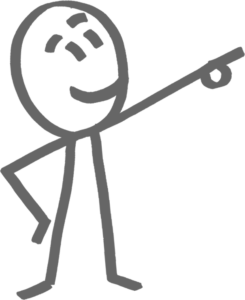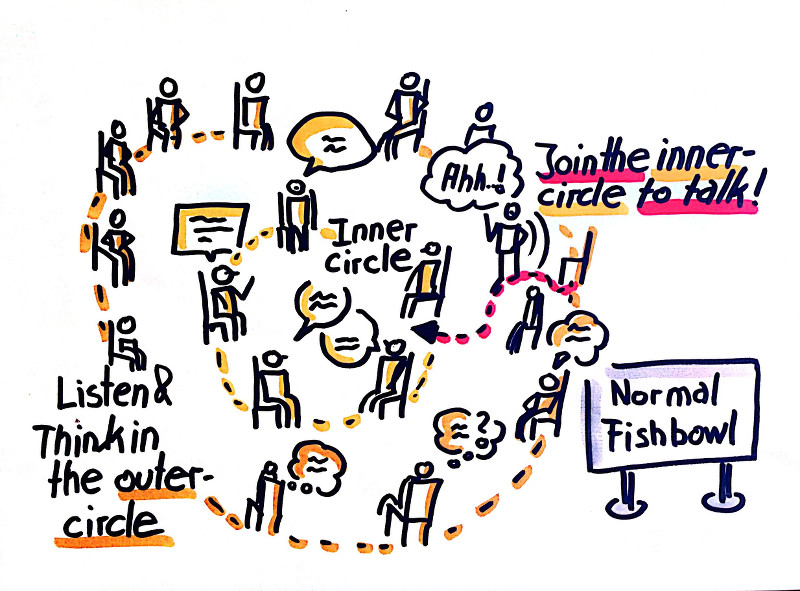









Co-founder of Visual Friends
Visual notes help us to remember and to structure our thinking. A visual facilitation fishbowl combines the strength of visuals with the facilitation format of a fishbowl.
Facilitating big group discussions can be challenging. Especially when you want to discuss one specific topic in the middle. You need to be an experienced facilitator to keep the conversation running and everyone engaged. It gets even harder if the topic has many side tracks and you as the facilitator have to decide which side track is important for the discussion and which one needs to be shortened. To make this a group decision and keep the discussion flowing the fishbowl format is worth a try.

The fishbowl works with two concentric circles of chairs in the room. One small inner circle (4-6 chairs) where the speakers sit and drive the conversation and an outer circle (many people) where the audience sits, listens and thinks about new ideas .
The rule of the fishbowl is that only the people in the inner circle are allowed to talk. If you are sitting in the outer circle and would like to add something to the conversation you need to stand up and walk from your seat in the outer circle towards the inner circle. If all chairs are occupied in the inner-circle you line up and wait until someone stands up and offers you his chair. Normally that doesn’t take long. As soon as you sit you can add your point to the conversation.
It may sound a bit difficult to do but with a bit of practising the group moves its way into collaborative visual thinking!
So what is a visual facilitation fishbowl? The visual facilitation fishbowl is very similar to the normal fishbowl and all the rules apply. However, two things are different:
If you think you can’t draw – you are welcome to join my bikablo® visual facilitation fundamentals training (Level 1.1). No drawing skills required!
Discover how much Visual Facilitation can help to do discussions and achieving goals. If you are having any questions, please feel free to contact me via Mail or Phone.

Marcel combines agile team coaching with visual thinking. Marcel believes that a group of people drawing together on a whiteboard can change the world. He loves high-performing teams and therefore coaches teams every day.

